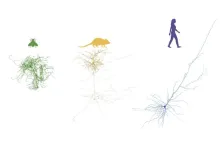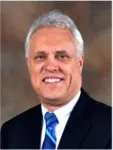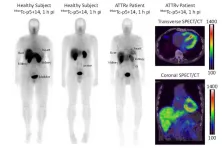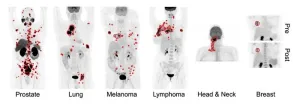(Press-News.org) The politicization of climate issues and the unsynchronized efforts of stakeholders are hindering the effectiveness of climate adaptation governance in the U.S. According to a new study(Link is external) published by Princeton researchers, the design characteristics of quasi-governmental organizations (QGOs) could provide insights on how to depoliticize climate information sources and foster multi-level stakeholder coordination.
Quasi-governmental organizations are entities that have a combination of public and private characteristics, utilizing both for-profit and not-for-profit modes of operation. Though these organizations already play a role in overcoming non-climatic governance challenges — e.g. providing apolitical management in municipal utility services, or resolving port development policy conflict between states —there are few studies that look at how the design of quasi-governmental organizations could be used for climatic purposes.
“The literature on quasi-governmental organizations is sparse — we know little about how their design characteristics vary and what this implies for their ability to overcome governance challenges,” explains lead author Paul Nix, a Ph.D. student at Princeton’s School of Public and International Affairs. “Consequently, there is a significant research gap on QGOs that limits our ability to assess the U.S.’ projected institutional capacity to address climate adaptation.”
To close this gap in the literature, Paul Nix(Link is external), Adam Goldstein(Link is external), and Michael Oppenheimer examined six QGO case studies from a variety of fields and with varying organizational structures. Some of the key characteristics they studied for each organization included the structure and operation of their board of directors, board composition (i.e. public vs. private sector members), and the financial resources available to the organization.
“The landscape of institutions in the climate adaptation domain is rich,” says Nix. “Scholars have given much attention to emergent and experimental partnerships of different public and private sector actors, as well as to those actors individually. What makes QGOs unusual is that they sit in the space between the public and private sectors by simultaneously embodying characteristics of both.”
The results suggest that some quasi-governmental organizations are useful for overcoming politicization or for fostering multi-level stakeholder coordination, but none of the organizations examined in this study proved optimal for both at the same time.
For example, the researchers studied the San Francisco Bay Conservation and Development Commision (SFBCDC) and found that its diverse board of public and private actors would be the ideal circumstance for bringing stakeholders together, but it was likely politicized from past conflicts with local and state politicians. The Regents of the University of California (UC) provides a case with the opposite dynamic. The large size of their board and wide range of financial resources make their decision-making process less amenable to the political influence of a single person or organization. However, the UC Regents is not composed of as wide of a variety of decision-makers and stakeholders as the SFBCDC.
“Our data suggests the socio-political context quasi-governmental organizations emerge from bears a mark on how legislators design these organizations,” says Nix. “However, we don’t yet fully understand legislators’ decision-making process with respect to this design, and therefore it’s hard to determine why some of our cases are either better at depoliticizing policy or fostering stakeholder coordination. More research is needed.”
Though more data is needed to fully understand how climate policy decisions would be impacted under quasi-governmental designs, co-author Michael Oppenheimer makes it clear that simply improving upon existing institutions is not likely to solve nuanced and complex climate issues.
“The climate problem and its solutions are so pervasive and complex that we need not merely improved responsiveness from existing institutions,” says Michael Oppenheimer, director of the Center for Policy Research on Energy and the Environment and Albert G. Milbank Professor of Geosciences and International Affairs and the High Meadows Environmental Institute. “Society must innovate by building new institutions like quasi-governmental organizations that can respond more quickly and effectively as new threats from climate change continually emerge over coming decades.”
The paper, “Models of Sub-national U.S. Quasi-Governmental Organizations: Implications for Climate Adaptation Governance,” was co-authored by Paul Nix (School of Public and International Affairs, Princeton University), Adam Goldstein (School of Public and International Affairs and the Department of Sociology, Princeton University), and Michael Oppenheimer (School of Public and International Affairs, Department of Geosciences, and the High Meadows Environmental Institute, Princeton University). The paper appeared in Climatic Change on June 10th, 2024.
END
Case studies show how quasi-governmental organizations could strengthen climate adaptation governance
2024-06-10
ELSE PRESS RELEASES FROM THIS DATE:
Brain’s structure hangs in ‘a delicate balance’
2024-06-10
When a magnet is heated up, it reaches a critical point where it loses magnetization. Called “criticality,” this point of high complexity is reached when a physical object is transitioning smoothly from one phase into the next.
Now, a new Northwestern University study has discovered that the brain’s structural features reside in the vicinity of a similar critical point — either at or close to a structural phase transition. Surprisingly, these results are consistent across brains from humans, mice and fruit flies, which suggests the finding might be universal.
Although the researchers don’t ...
Protein study could help researchers develop new antibiotics
2024-06-10
A bacterial enzyme called histidine kinase is a promising target for new classes of antibiotics. However, it has been difficult to develop drugs that target this enzyme, because it is a “hydrophobic” protein that loses its structure once removed from its normal location in the cell membrane.
Now, an MIT-led team has found a way to make the enzyme water-soluble, which could make it possible to rapidly screen potential drugs that might interfere with its functions.
The researchers created their new version ...
Two can play that game: juvenile dolphins who play together are more successful as adults
2024-06-10
Juvenile social play predicts adult reproductive success in male bottlenose dolphins, a new study has found.
Fresh findings published today in Proceedings of the National Academy of Sciences led by researchers from the University of Bristol and University of Western Australia, show that juvenile male dolphins with strong social bonds practice adult-like reproductive behaviours when playing together, and those juvenile males who spend more time practicing will father more offspring as adults. The study provides rare evidence for a link between juvenile social play and reproductive success in a wild animal.
In collaboration with international colleagues, the ...
Wire-cut forensic examinations currently too unreliable for court, new study says
2024-06-10
A research article published June 10 in the Proceedings of the National Academy of Sciences highlights the importance of careful application of high-tech forensic science to avoid wrongful convictions.
In a study with implications for an array of forensic examinations that rely on “vast databases and efficient algorithms,” researchers found the odds of a false match significantly increase when examiners make millions of comparisons in a quest to match wires found at a crime scene with the tools allegedly used to cut them.
The rate of mistaken identifications could be as high as one in 10 or more, concluded ...
SNMMI elects Jean-Luc C. Urbain, MD, Ph.D., FASNC, as President-Elect at 2024 Annual Meeting
2024-06-10
Toronto, Ontario—Jean-Luc C. Urbain, MD, PhD, FASNC, professor of Radiology/Nuclear Medicine and Medicine, has been named president-elect of the Society of Nuclear Medicine and Molecular Imaging (SNMMI). SNMMI introduced a new slate of officers during its 2024 Annual Meeting, held June 8-11 in Toronto.
“As SNMMI president-elect, I plan to focus on bringing and integrating radiopharmaceutical theranostics into the clinic to benefit as many patients as possible. This will require an emphasis ...
UNC-Chapel Hill researchers create skin-inspired sensory robots to provide medical treatment
2024-06-10
University of North Carolina at Chapel Hill scientists have created innovative soft robots equipped with electronic skins and artificial muscles, allowing them to sense their surroundings and adapt their movements in real-time, according to the paper, “Skin-Inspired, Sensory Robots for Electronic Implants,” in Nature Communications.
In their research, funded by the National Science Foundation and the National Institutes of Health, the robots are designed to mimic the way muscles and skin work together in animals, making them more effective and safer to use inside the body. The e-skin integrates various sensing materials, such as silver nanowires ...
Researchers use 3D visualization to predict, prevent hurricane damage
2024-06-10
Beginning annually on June 1, hurricane season poses a major threat to Texas coastal communities, causing both physical and financial damage to the areas they hit. This damage can be staggering; when Hurricane Harvey hit in 2017, it cost Galveston $132.73 billion in damages. Texas A&M University researchers have collaborated to understand the impacts of storm surge floods before they occur to potentially reduce the level of damage. Their study was published in “Urban Informatics.”
The researchers have implemented 3D visualization technology to identify the potential outcomes of hurricane flooding ...
Kepplinger, Vidyashankar to receive funding for conference
2024-06-10
David Kepplinger, Assistant Professor, Statistics, and Anand Vidyashankar, Professor, Statistics, are set to receive funding from the National Science Foundation for: “Conference: Building a robust community: Joint International Conference on Robust Statistics and Conference on Data Science, Statistics, and Data Science.”
Kepplinger and Vidyashankar will receive $20,993 from NSF for this award. Funding will begin in July 2024 and will end in late June 2025.
The funding will support 15–20 students and early-career researchers to participate in the joint International Conference on Robust Statistics (ICORS) and the Conference ...
Novel radiotracer produces high quality images of “Alzheimer’s disease of the heart”
2024-06-10
Toronto, Ontario—A newly developed radiotracer can generate high quality and readily interpretable images of cardiac amyloidosis, a condition referred to as the “Alzheimer’s disease of the heart.” As the first amyloid-specific and pan-amyloid binding radiotracer designed for planar and SPECT/CT imaging, 99mTc-p5+14 could play an important role in early detection and treatment of cardiac amyloidosis. This research was presented at the 2024 Society of Nuclear Medicine and Molecular Imaging Annual Meeting.
Systemic amyloidosis is an incurable disease in which abnormal amounts of ...
New AI tool accurately detects six different cancer types on whole-body PET/CT scans
2024-06-10
Toronto, Ontario—A novel AI approach can accurately detect six different types of cancer on whole-body PET/CT scans, according to research presented at the 2024 Society of Nuclear Medicine and Molecular Imaging Annual Meeting. By automatically quantifying tumor burden, the new tool can be useful for assessing patient risk, predicting treatment response, and estimating survival.
“Automatic detection and characterization of cancer are important clinical needs to enable early treatment,” said Kevin H. ...





